Q
What is the Service Price of Honda Jazz? Look At Here!
Regarding the maintenance costs of the Honda Jazz in Malaysia, the specific prices vary depending on different service items and authorized service centers. For regular basic maintenance (such as oil and filter changes), it generally ranges from RM200 to RM400. For more extensive maintenance (such as changing the transmission fluid or checking the braking system), it may cost between RM500 and RM800. The actual costs also depend on the vehicle's year, mileage, and whether original or certified parts are selected.
It is recommended that car owners conduct maintenance regularly according to the official maintenance manual. This not only extends the vehicle's lifespan but also ensures optimal performance. Additionally, Honda - authorized service centers in Malaysia usually offer a transparent pricing system. Car owners can inquire about detailed costs in advance through the official website or by phone. Some centers also launch seasonal promotions or maintenance packages, which can further reduce expenses.
For car owners on a tight budget, they can consider using third - party certified repair shops that meet Honda standards. However, they need to ensure that the technical qualifications of the shops and the sources of the parts are reliable to avoid affecting the warranty rights. Regular maintenance not only helps prevent sudden breakdowns but also maintains a high resale value of the used car, making it a crucial investment for long - term vehicle use.
Special Disclaimer: This content is published by users and does not represent the views or position of PCauto.
Related Q&A
Q
What Segment is Honda Jazz?
The Honda Jazz is classified as a B-Segment small hatchback in the Malaysian market. This segment is typically characterized by flexible handling, economic practicality, and convenience for urban commuting, making it suitable for Malaysia's narrow streets and high fuel costs. The Jazz has become a popular choice in this segment, especially among young families and urban commuters, thanks to its iconic "Magic Seat" flexible seating design, efficient Earth Dreams engine technology, and spacious interior within a compact body.
In the Malaysian market, competing models in the same segment include the Toyota Yaris and Perodua Myvi. However, the Jazz is well - known for the high resale value and reliability of the Honda brand. It's worth noting that B - Segment vehicles in the Southeast Asian market generally prioritize fuel economy and maintenance costs. The combination of the Jazz's 1.5L i - VTEC engine and CVT transmission can achieve an actual fuel consumption of over 15 km/L, meeting the local consumers' demand for practicality.
In addition, this vehicle line was upgraded to a hybrid version in some global markets in 2021. However, the current models in Malaysia still mainly use traditional fuel power. Whether a new energy version will be introduced in the future depends on Honda's regional strategic adjustments.
Q
What is the Reslae Value of Honda Jazz?
The resale value of the Honda Jazz in the Malaysian used - car market is relatively stable. This is due to its reliable quality, low fuel consumption, and the high local recognition of the Honda brand. Depending on the vehicle's age, mileage, and condition, a 3 - to 5 - year - old Jazz can usually retain 50% - 65% of its original price. The Hybrid models may have a 5% - 8% premium because of their energy - saving features.
The key factors affecting its residual value include regular maintenance records (especially the maintenance of the CVT transmission), the body color (white and silver are more popular), and whether it is still within the original factory warranty period. It is recommended that car owners keep complete maintenance receipts and use original factory parts to maximize the vehicle's value retention.
Among its peers, the used - car price performance of the Jazz is better than some of its competitors. This is related to its flexible space design (such as the ULTRA seat system) and low failure rate. However, the specific transaction price still needs to refer to the real - time data on used - car platforms like Carlist or mytukar.
It's worth noting that the tax - exemption policy for domestic cars introduced in some regions after 2020 has slightly affected the price fluctuations of imported used cars. But as a cost - effective urban vehicle, the demand for the Jazz remains strong in urban areas like the Klang Valley.
Q
How Many CC is Honda Jazz?
The Honda Jazz models available in the Malaysian market are mainly equipped with a 1.5 - liter naturally aspirated engine with a displacement of 1497cc (cubic centimeters). This is a common 'golden displacement' for compact hatchbacks, balancing fuel economy and power performance. This engine uses Honda's i - VTEC technology, capable of outputting approximately 120 horsepower and 145 Nm of torque. It is paired with a CVT transmission or a 6 - speed manual transmission (depending on the version), which is suitable for urban commuting and flexible driving.
It's worth noting that while the displacement (CC) affects power output, the actual driving experience also depends on engine tuning, vehicle weight, and the matching of the transmission system. For example, Honda has optimized the combustion efficiency of the Jazz through Earth Dreams technology, making the torque more abundant at low speeds. Malaysian customers can also pay attention to the minor changes in different model years when making a choice. For instance, some versions after 2020 have upgraded the Honda SENSING safety system.
Similar models in the same class, such as the Toyota Yaris or Perodua Myvi, also use a similar displacement, but they have different technological focuses. It is recommended to take test drives for comparison. Additionally, Malaysia's automotive tax structure gives vehicles with a displacement below 1.5 liters a price advantage, which is also one of the reasons why the Jazz has been popular for a long time.
Q
What is the Engine in Honda Jazz?
The Honda Jazz available in the Malaysian market is equipped with a 1.5-liter i-VTEC naturally aspirated gasoline engine. This engine is well - known for its high efficiency and reliability. It has a maximum output power of approximately 120 horsepower and a peak torque of 145 Nm, making it suitable for city driving and daily commuting while also taking fuel economy into account.
This engine adopts Honda's classic i-VTEC technology, which optimizes power output and fuel consumption through an intelligent variable valve timing and lift system. Paired with a CVT continuously variable transmission, it offers a smooth driving experience.
In addition, the Honda Jazz also comes in a hybrid version (such as the e:HEV). It combines a 1.5-liter Atkinson cycle engine with a dual - motor system, further enhancing energy - saving efficiency, which is ideal for consumers with higher environmental protection requirements.
For Malaysian users, the durability and low maintenance cost of this engine are also among the reasons for its popularity. Moreover, Honda's after - sales service network covers the whole country, providing convenience for car owners. When it comes to the used - car market, the engine of the Jazz also has a relatively high resale value, making it an economical and practical choice.
Q
What is the Gearbox Type of Honda Jazz?
The transmission types vary among different versions of the Honda Jazz. Specifically, the 2019 Honda Jazz 1.5 S, 1.5 E, and 1.5 V versions all come with a CVT (Continuously Variable Transmission). This type of transmission offers a smooth shifting experience, making the driving process even more seamless and also helping to improve fuel efficiency.
On the other hand, the 2019 Honda Jazz 1.5 Hybrid version is equipped with a DCT (Dual-Clutch Transmission). A dual-clutch transmission allows for rapid gear changes and highly efficient power transfer, which can enhance the vehicle's dynamic performance and driving pleasure to some extent.
Each type of transmission has its own unique features. Consumers can choose the appropriate model according to their driving habits and needs.
Q
What is the PCD Size of Honda Jazz?
The PCD (Pitch Circle Diameter) size of the Honda Jazz is 4x100, which means its wheels have 4 bolt holes, and the centers of these holes are distributed on a circle with a diameter of 100 millimeters. This specification is very common in the Malaysian market and is suitable for many economy and compact cars. Understanding the PCD size is crucial when replacing wheels or upgrading tires because if the PCD doesn't match, the wheels won't be installed correctly, which may affect driving safety.
Apart from the PCD, when choosing wheels, you also need to pay attention to the center bore diameter (CB) and the offset value (ET) to ensure full compatibility. Owners of the Honda Jazz can choose factory - spec wheels or wheels from other brands that meet the 4x100 PCD when modifying their wheels. However, it is recommended to choose certified products to ensure quality and safety.
In addition, when modifying wheels, you need to pay attention to the traffic regulations in Malaysia to ensure that the modified vehicle meets local standards and avoid penalties for violations.
Q
Does Honda Jazz Support Apple Carplay?
Yes, some models of the Honda Jazz in Malaysia are indeed equipped with Apple CarPlay, especially the higher - spec versions like the Honda Jazz RS or Honda Jazz Hybrid. These models usually come with a touch - screen infotainment system that's compatible with Apple CarPlay. This allows users to connect their iPhones via a data cable and use functions such as navigation, music, and making calls. It's important to note that there might be differences in Jazz models of different years and configurations. It's recommended to confirm the specific features with the dealer before purchasing. The addition of Apple CarPlay significantly enhances driving convenience, enabling users to use common phone functions more safely without having to take their eyes off the road to operate their phones.
Moreover, the Honda Jazz is well - loved by Malaysian users for its flexible interior space design and fuel efficiency. It's ideal for city commuting and small families. If you have high requirements for in - car connectivity features, you can also look into similar configurations of other models in the same class, such as the Toyota Yaris or Mazda 2, to make a more suitable choice.
Q
What is the Tyre Brand of Honda Jazz?
The original-equipment tire brands for the Honda Jazz in the Malaysian market may vary depending on the model year and configuration. Common tire - supplying brands include mainstream manufacturers such as Dunlop, Yokohama, or Bridgestone. These brands are well-known for their wear resistance and wet - surface performance, which meet the requirements of the rainy climate in Southeast Asia. Car owners can confirm the specific tire model through the sidewall markings or the user manual. For example, the Dunlop ENASAVE EC300+ is a common choice for high-efficiency and energy-saving tires in recent years.
It's worth noting that since tires are consumable items, when replacing them, in addition to the original-factory specifications, you can also consider silent and comfortable products like the Michelin Primacy 4 or the Continental UC6. However, you must ensure that the size (such as 185/55 R16), load index, and speed rating meet the matching requirements of the Jazz's suspension setup and ABS system.
Regularly checking the tire pressure (it is recommended to do it once a month) and wheel alignment can extend the tire life. Especially on the high-temperature roads in Malaysia, the rubber ages more quickly. If the tread depth is found to be less than 1.6 millimeters, you should replace the tires immediately to comply with JPJ regulations.
Q
Is Honda Jazz a Good Car? Learn the Pros and Cons Here!
The Honda Jazz is a highly favored small hatchback in Malaysia. Its advantages include a flexible body size that is suitable for city driving, and it offers economical fuel consumption. The 1.5-liter i-VTEC engine it is equipped with provides smooth and reliable power. The interior space is cleverly designed. In particular, the "Magic Seats" allow for flexible adjustment of the storage space, making it suitable for families or young consumers. Moreover, the Honda brand has an extensive after-sales service network in Malaysia, making maintenance relatively convenient.
However, it does have some drawbacks. Its sound insulation is average, and wind noise is quite obvious when driving at high speeds. The rear suspension is tuned to be on the stiffer side, which affects comfort to some extent. Also, its configuration may not be as rich as that of its competitors in the same class.
For buyers with a limited budget who value practicality and brand reliability, the Jazz is a worthy option to consider. But if you're looking for higher comfort or more advanced technological features, you may need to compare other models.
In Malaysia's hot and rainy climate, it is recommended to regularly check the air-conditioning system and the anti-rust condition of the chassis to extend the vehicle's lifespan.
Q
What is the Width of Honda Jazz?
The body width of the Honda Jazz is 1,694 millimeters. This dimension is considered moderate among the common city compact cars in Malaysia. It can ensure that the interior lateral space is sufficient for three adults to sit comfortably, and at the same time, it can also flexibly maneuver through the narrow streets of Kuala Lumpur or the old shopping mall parking lots. As a global strategic model of Honda, the compact body design of the Jazz is particularly suitable for the winding mountain roads and congested urban roads in Malaysia. The MM concept (minimizing the mechanical space and maximizing the interior space) it adopts enables the 1,694-millimeter body width to achieve a class - leading interior space utilization rate. The magic seats in the rear can be folded in multiple combinations, which is very practical when carrying large items such as potted plants or durians.
It's worth noting that when purchasing a compact car in Malaysia, besides paying attention to the body width, you should also take note of the overall width data when the rear - view mirrors are unfolded. This is especially important for the local road conditions where motorcycles often shuttle through. The electric folding rear - view mirror function of the Jazz can handle this situation very well.
Latest Q&A
Q
Where is the Quadrifoglio engine made?
The Quadrifoglio engine is the exclusive power unit for Alfa Romeo's high - performance models. Currently, engines in this series are mainly produced at the VM Motori factory in Termoli, Italy. This factory belongs to the Stellantis Group and is well - known for its precision manufacturing of high - performance engines.
For Malaysian car enthusiasts, the most famous 2.9 - liter V6 twin - turbocharged engine in the Quadrifoglio series was once installed in the Giulia and Stelvio Quadrifoglio models. Its design incorporates Ferrari's technological genes and can unleash a powerful performance of 510 horsepower.
It's worth noting that although the Japanese cars dominate the Malaysian market, the craftsmanship of European high - performance engines still attracts local car lovers. These engines usually adopt racing technologies such as forged crankshafts and multi - spark plug ignition. In a hot climate, they need more frequent maintenance to stay in the best condition. It is recommended that car owners strictly follow the original factory's maintenance schedule and use the specified grade of engine oil to ensure the reliability of such precision power systems in the tropical environment.
Q
Is Perodua Ativa worth buying?
As one of the best-selling B-Segment SUVs in the Malaysian market, the Perodua Ativa is truly worth considering for purchase, especially for consumers who pursue high cost-effectiveness, low fuel consumption, and practical functions. It is equipped with a 1.0L turbocharged engine paired with a D-CVT gearbox. Although its power performance is just average, it has excellent fuel economy (the official data shows 4.6L/100km), making it suitable for urban commuting. At the same time, it comes standard with the ASA 3.0 advanced safety assistance system (including pre-collision warning, lane departure warning, etc.), and its safety configuration is quite prominent among vehicles in the same class.
Its exterior design is youthful, and the interior is mainly focused on practicality. The space is sufficient to meet the needs of small families. However, if you're looking for more powerful performance or a luxurious feel, you may need to consider higher-priced models. Another advantage of the Ativa is that the Perodua brand has a high vehicle ownership in Malaysia, which means convenient after-sales maintenance with relatively low costs, and the used car resale value is also relatively stable.
It should be noted that its 1.0L three-cylinder engine may struggle a bit when overtaking at high speeds. It is recommended to take a test drive to see if the power meets your personal needs. Overall, if your budget is between RM60,000 and RM80,000, the Ativa is a well-balanced and practical choice among joint-venture brand SUVs. However, consumers can also compare it with vehicles in the same class, such as the Proton X50, and make a decision after weighing the differences in configuration and price according to their own preferences.
Q
What are the disadvantages of Perodua Ativa?
The Perodua Ativa, a popular B-Segment SUV, offers high cost - effectiveness and excellent fuel economy. However, it still has some notable drawbacks. For instance, the 1.0 - liter three - cylinder turbocharged engine it's equipped with has a slightly insufficient power output at low RPMs. When overtaking at high speeds, it requires a deeper throttle response. Moreover, the three - cylinder configuration may generate more vibrations than a four - cylinder engine after long - term use, which can affect driving comfort.
In addition, although its suspension is tuned for a comfortable ride, the vehicle experiences more obvious body roll when cornering, and its handling performance is rather mediocre. As for the interior, the Ativa focuses on practicality. However, the use of some plastic materials may leave consumers who pursue a sense of luxury feeling dissatisfied. Also, the rear - seat space is a bit cramped for taller passengers.
Regarding safety features, while the ASA 3.0 system comes as standard, compared with some models in the same class, it has fewer airbags, which might influence the choices of some buyers. It's worth noting that small turbocharged engines may have slightly lower heat - dissipation efficiency than naturally aspirated engines when operating under high loads for a long time in Malaysia's hot climate. This is a factor that potential buyers need to consider.
Overall, the Ativa is suitable for urban users with limited budgets who prioritize fuel economy. But consumers with higher requirements for power, interior quality, or high - speed stability may need to weigh these characteristics.
Q
How much is Perodua Ativa insurance?
The insurance cost of the Perodua Ativa varies according to multiple factors, including the vehicle model, the owner's age, driving record, type of insurance (such as comprehensive insurance or third - party insurance), and the insurance company chosen. Generally speaking, the insurance cost for a new car in the first year is approximately between RM1,500 and RM3,000. The specific amount depends on the quotes and promotional activities of the insurance company. To get a more accurate quote, it is recommended that car owners make detailed inquiries through the official websites of insurance companies or agents. They can also use an online insurance calculator for an estimate.
In addition, the automotive insurance market in Malaysia offers a variety of additional options. For example, the No - Claim Discount (NCD) can significantly reduce the premium, and choosing a higher excess may also cut down the insurance cost. Understanding these factors can help car owners make a wiser choice when purchasing insurance and ensure that their vehicles get adequate coverage.
Q
What is the lifespan of the Perodua Ativa battery?
The battery life of the Perodua Ativa usually ranges from 2 to 4 years, depending on usage habits and maintenance. The hot and humid climate in Malaysia may have an impact on the battery life, so it's very important to regularly check the battery status. To extend the battery life, it's recommended to avoid long - term short - distance driving, as this may lead to insufficient battery charging. Also, regularly clean the battery terminals to prevent corrosion. If you find that the vehicle has difficulty starting or the lights are dimming, it may be a sign of battery aging, and you should check or replace the battery in time. In addition, choosing a battery brand and model that match the original factory specifications can ensure optimal performance, and regular maintenance at an authorized service center can also help detect battery problems in a timely manner. For the hybrid version of the Ativa, its battery system may be different. It's advisable to follow the manufacturer's maintenance guide to achieve a longer service life.
View MoreRelated News
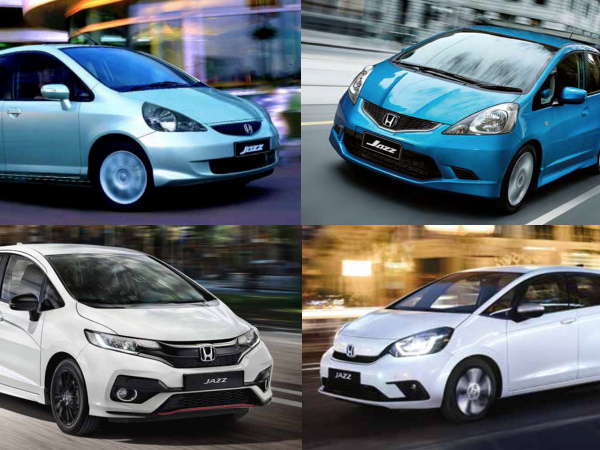
Auto Arena: Which generation of Honda Jazz (Fit) is your favorite?
LienMay 21, 2024

Honda Chief Engineer Goes Viral for Hairstyle, Formerly Led EV Dynamic Tuning
RobertJul 31, 2025
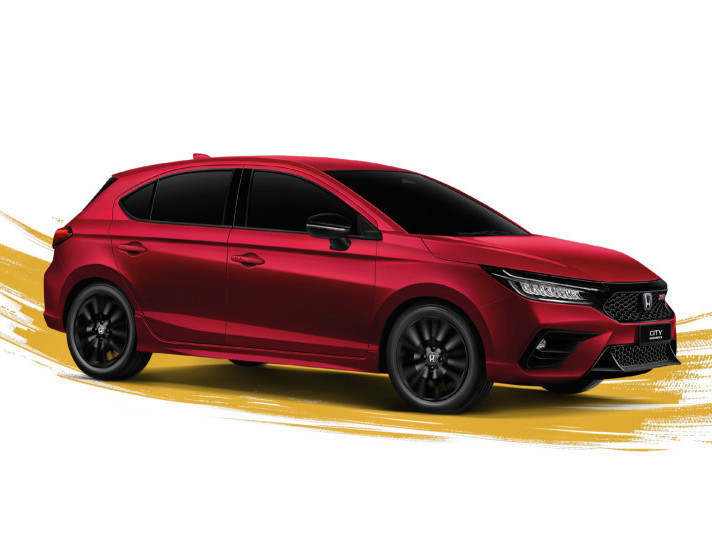
Honda City Hatchback Interior: Surprising Space Inside a Compact Body
WilliamJul 16, 2025
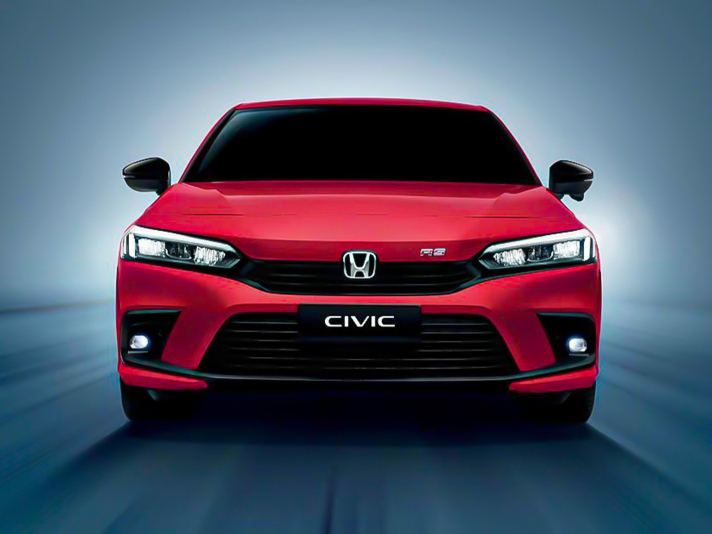
Honda Civic Interior Revealed: A Comprehensive Analysis of Civic’s Interior Charm
Kevin WongJul 10, 2025
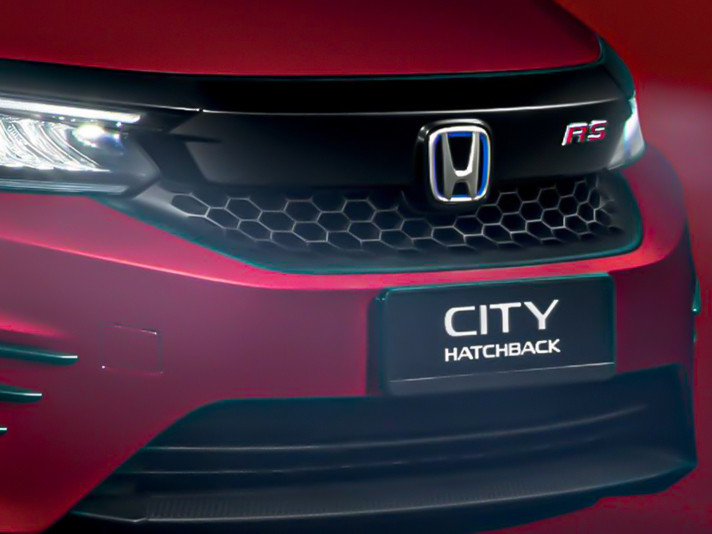
Is Honda City Hatchback Still Worth Buying in 2025?
JohnJun 26, 2025
View More



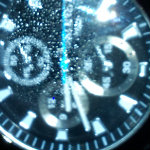





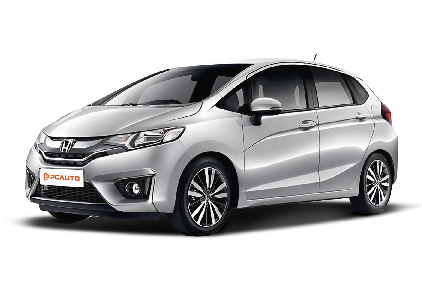
 Cars
Cars

Pros
Cons